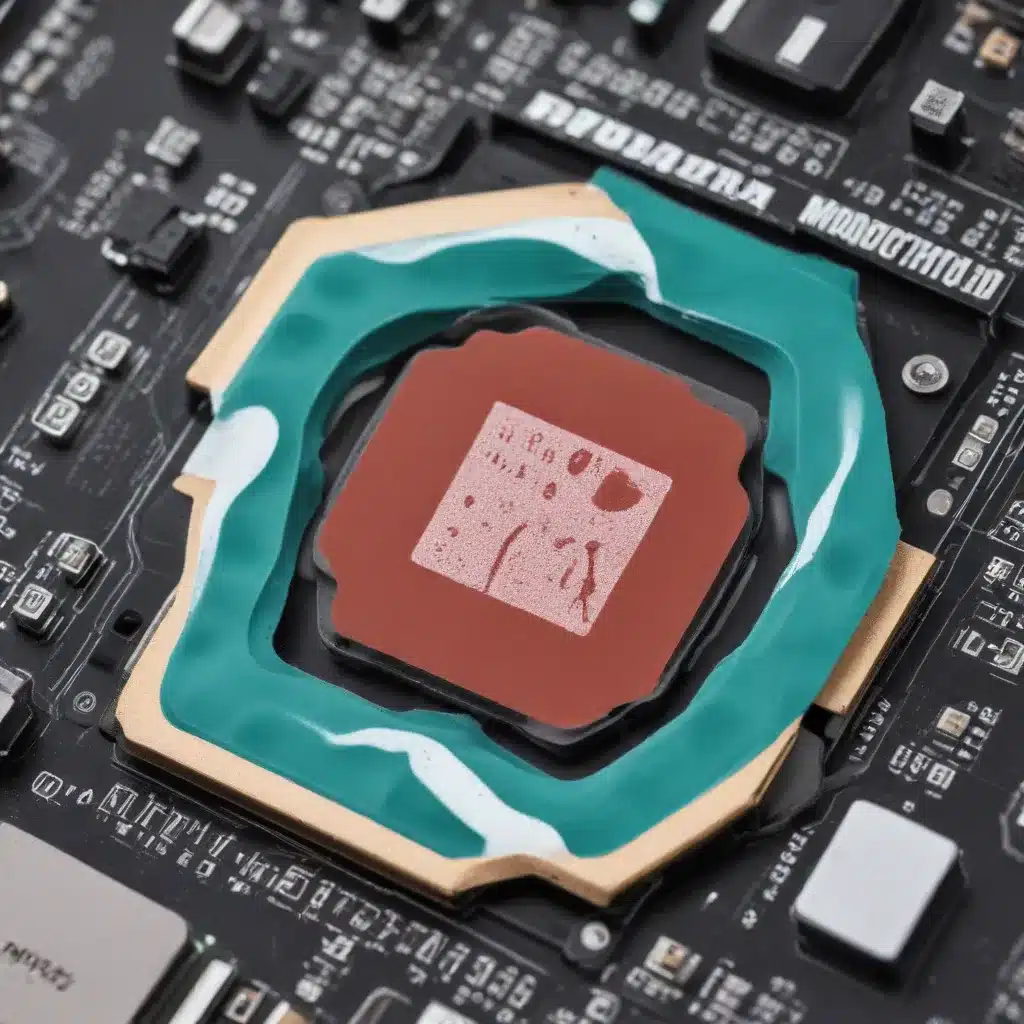
As a seasoned IT professional, I’ve witnessed firsthand the importance of maintaining optimal thermal performance in laptops. One of the most effective ways to enhance cooling efficiency and prolong the lifespan of your device is by properly reapplying thermal paste. In this comprehensive guide, we’ll explore the step-by-step process of thermal paste reapplication, providing practical tips and insights to help you achieve better cooling and improved system performance.
Understanding Thermal Paste and Its Role
Thermal paste, also known as thermal compound or heat sink compound, is a thermally conductive material applied between the CPU (or GPU) and the heat sink. This substance helps bridge the microscopic gaps and irregularities on the surfaces, facilitating efficient heat transfer from the processor to the heat sink, and ultimately to the cooling system.
Over time, the thermal paste can degrade, dry out, or become contaminated, reducing its effectiveness. This can lead to increased temperatures, throttling, and even system instability. Regularly reapplying the thermal paste is crucial to maintaining optimal cooling performance and prolonging the lifespan of your laptop’s components.
When to Reapply Thermal Paste
Determining the appropriate time to reapply thermal paste can vary depending on several factors, such as the usage patterns, environmental conditions, and the quality of the original thermal paste. As a general guideline, it’s recommended to reapply thermal paste every 12 to 24 months, or when you notice a significant increase in temperatures or performance issues.
Some common signs that it’s time to reapply thermal paste include:
- Increased CPU or GPU temperatures during regular usage or under load
- Frequent throttling or system instability due to overheating
- Visible deterioration or drying of the existing thermal paste
It’s important to note that the specific timeframe may differ based on your laptop’s usage and the quality of the thermal paste. It’s always a good idea to monitor your system’s thermal performance and act proactively to maintain optimal cooling.
Preparing for Thermal Paste Reapplication
Before you begin the reapplication process, it’s crucial to gather the necessary tools and ensure a clean work environment. Here’s what you’ll need:
- Thermal paste: Choose a high-quality, thermally conductive paste, such as those recommended by the laptop manufacturer or reputable brands like Arctic, Noctua, or Thermal Grizzly.
- Isopropyl alcohol (IPA): Obtain a bottle of 90% or higher isopropyl alcohol to clean the CPU and heat sink surfaces.
- Lint-free cloths or cotton swabs: These will be used to apply the IPA and wipe away the old thermal paste.
- Thermal paste applicator (optional): Some thermal pastes come with a small applicator, which can help ensure an even distribution.
- Proper workspace: Set up a clean, well-lit, and static-free area to work on your laptop. Ensure you have enough space to handle the components safely.
Step-by-Step Thermal Paste Reapplication
Follow these steps to properly reapply thermal paste to your laptop:
-
Prepare the Laptop: Begin by shutting down your laptop and unplugging it from the power source. Allow the device to cool down completely before proceeding.
-
Disassemble the Laptop: Carefully remove the laptop’s bottom cover and gain access to the CPU and heat sink components. Refer to your laptop’s service manual or online guides for detailed disassembly instructions.
-
Clean the Surfaces: Using a lint-free cloth or cotton swabs, apply a small amount of isopropyl alcohol to the CPU and heat sink surfaces. Gently wipe away the old thermal paste, ensuring the surfaces are clean and dry.
-
Apply the New Thermal Paste: Squeeze a small, pea-sized amount of the new thermal paste directly onto the center of the CPU. If using a thermal paste applicator, spread the paste evenly across the surface.
-
Reassemble the Laptop: Carefully replace the heat sink and secure it back in place. Ensure all the screws are tightened properly according to the manufacturer’s instructions.
-
Power on and Monitor Temperatures: Reassemble the laptop and power it on. Monitor the CPU and GPU temperatures under load to ensure they are within the expected ranges. You may need to adjust the system’s fan settings or explore additional cooling solutions if the temperatures remain high.
Optimizing Thermal Performance
Once you’ve successfully reapplied the thermal paste, there are a few additional steps you can take to further optimize the cooling performance of your laptop:
Utilize Cooling Pads or Stands
Investing in a high-quality cooling pad or laptop stand can significantly improve airflow and heat dissipation. These accessories often feature built-in fans that help draw hot air away from the laptop, reducing overall temperatures.
Monitor and Manage Thermals
Install a system monitoring tool, such as HWMonitor or NZXT CAM, to keep a close eye on your laptop’s CPU and GPU temperatures. This will allow you to identify any potential issues and make adjustments to fan speeds or power settings as needed.
Maintain Cleanliness
Regularly clean the laptop’s air vents and fans to ensure unobstructed airflow. Accumulated dust can significantly impede the cooling system’s effectiveness, leading to higher temperatures and potential performance degradation.
By following the steps outlined in this guide and implementing additional cooling strategies, you can significantly improve the thermal efficiency of your laptop, prolonging its lifespan and ensuring optimal performance. Remember, proper maintenance and proactive troubleshooting are key to maintaining a healthy and reliable laptop.
If you encounter any persistent issues or require further assistance, feel free to reach out to the IT Fix blog for additional support and expertise.












